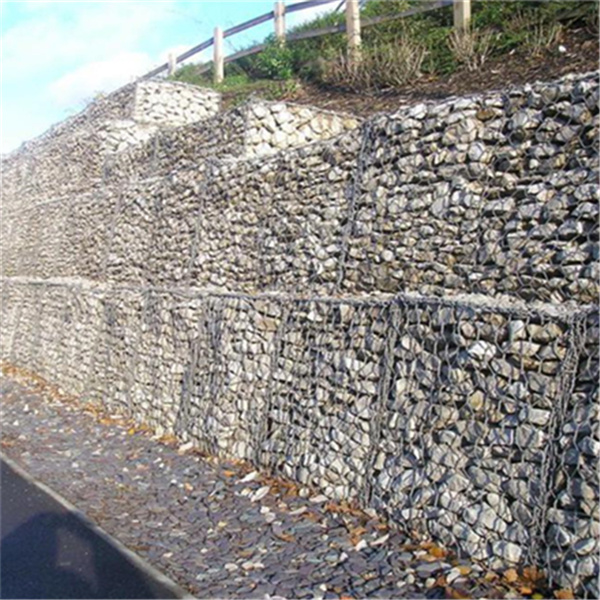Desemba . 29, 2024 05:13 Back to list
gabion structure
The Versatility and Benefits of Gabion Structures
Gabion structures have gained widespread popularity in various engineering and landscaping projects due to their unique properties and environmental benefits. Comprising wire mesh cages filled with stones or other materials, gabions provide a robust yet flexible solution for addressing challenges related to erosion control, slope stabilization, and even aesthetic landscaping. This article explores the various applications, advantages, and considerations associated with gabion structures.
Applications of Gabion Structures
1. Erosion Control One of the primary applications of gabions is in the prevention of soil erosion. They are often used along riverbanks, coastlines, and slopes where soil is at risk of being washed away. The heavy stones contained within the wire mesh cages create a barrier that dissipates the energy of flowing water, thus reducing the velocity and force that might otherwise erode the soil underneath.
2. Slope Stabilization Gabion walls can be utilized to stabilize steep slopes. By placing a series of gabion baskets along vulnerable areas, engineers can prevent landslides and ensure the integrity of the terrain. The flexibility of the wire mesh allows the structures to adapt to soil movements without cracking, making them suitable for various geological conditions.
3. Retaining Walls Gabion structures serve as effective retaining walls that hold back soil, providing support in areas where traditional materials might fail. Their porous nature promotes drainage, reducing hydrostatic pressure behind the wall and lowering the risk of collapse.
4. Architectural Features Beyond their functionality, gabions are also employed in landscaping and architectural designs, adding aesthetic value to spaces. Their rustic appearance can be integrated into parks, gardens, and urban environments, often serving as seating areas or decorative boundaries.
5. Gabion Baskets in Construction In construction, gabion baskets can be filled with concrete, stones, or recycled materials, creating a sustainable option for foundations or substructures. Their adaptability allows for innovative designs that would be challenging with rigid materials.
gabion structure

Advantages of Gabion Structures
1. Environmental Benefits Gabions are a more environmentally friendly option compared to traditional construction methods. The use of natural stones minimizes the carbon footprint associated with manufacturing concrete. Furthermore, their porous nature allows for proper drainage, reducing runoff and encouraging vegetation growth around them.
2. Cost-Effectiveness The materials used in gabion construction are often locally sourced, which can significantly lower costs. The installation process is relatively straightforward, requiring less time and labor than conventional methods.
3. Durability and Longevity Gabions are designed to withstand harsh environmental conditions. The galvanized or PVC-coated wire mesh provides resistance against corrosion, ensuring that the structures remain intact for many years. Their ability to accommodate soil movements also contributes to their durability in fluctuating climates.
4. Versatile Design Options Gabion structures can be easily customized to fit various project requirements. Fill materials can range from natural stones to man-made alternatives, allowing for unique designs that cater to architectural needs or aesthetic preferences.
Considerations for Gabion Structures
While gabion structures offer numerous advantages, there are some considerations to keep in mind during planning and implementation. Proper sizing and placement of the gabions are critical to ensure their effectiveness. Additionally, soil conditions and hydrological assessments should be performed to mitigate any potential risks related to water flow and soil stability.
In conclusion, gabion structures represent a versatile and sustainable option for addressing a wide array of environmental and construction challenges. Their effectiveness in erosion control, slope stabilization, and landscaping makes them an invaluable tool in modern engineering practices. As urbanization and climate change continue to pose significant challenges, the use of innovative solutions like gabions will undoubtedly play a pivotal role in creating resilient and sustainable environments.
-
hesco-gabion-baskets-for-coastal-erosion-prevention
NewsAug.22,2025
-
longevity-and-durability-of-river-rock-gabion-walls
NewsAug.22,2025
-
how-to-integrate-gabion-3d-walls-in-urban-planning
NewsAug.22,2025
-
reno-mattress-gabion-applications-in-civil-engineering
NewsAug.22,2025
-
how-to-install-wire-mesh-for-gabion-baskets-properly
NewsAug.22,2025
-
best-materials-for-filling-a-chain-link-gabion
NewsAug.22,2025
-
Wire Mesh Thickness Impact on Gabion Wall Load Bearing
NewsAug.12,2025






